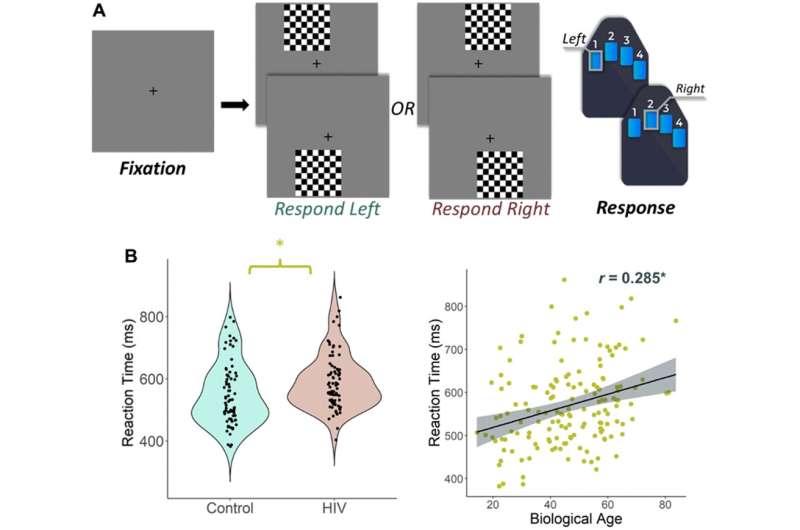Epigenetic aging associated with aberrant neural oscillatory dynamics of visuospatial processing in those with HIV


A new research paper titled “Epigenetic aging is associated with aberrant neural oscillatory dynamics serving visuospatial processing in people with HIV” has been published in Aging.
Despite effective antiretroviral therapy, cognitive impairment and other aging-related comorbidities are more prevalent in people with HIV (PWH) than in the general population. Previous research examining DNA methylation has shown PWH exhibit accelerated biological aging. However, it is unclear how accelerated biological aging may affect neural oscillatory activity in virally suppressed PWH, and more broadly how such aberrant neural activity may impact neuropsychological performance.
In this new study, participants (n = 134) between the ages of 23 and 72 years underwent a neuropsychological assessment, a blood draw to determine biological age via DNA methylation, and a visuospatial processing task during magnetoencephalography (MEG). Researchers focused their analyses on the relationship between biological age and oscillatory theta (4-8 Hz) and alpha (10-16 Hz) activity among PWH (n=65) and seronegative controls (n = 69).
“To our knowledge, no study to date has directly linked accelerated biological aging in PWH to the neuro-functional changes that occur in cognitively impaired PWH, which include deficits in visuospatial processing, attention, working memory, and motor function networks [10-19].”
PWH had significantly elevated biological age when controlling for chronological age relative to controls. Biological age was differentially associated with theta oscillations in the left posterior cingulate cortex (PCC) and with alpha oscillations in the right medial prefrontal cortex (mPFC) among PWH and seronegative controls. Stronger alpha oscillations in the mPFC were associated with lower CD4 nadir and lower current CD4 counts, suggesting such responses were compensatory. Participants who were on combination antiretroviral therapy for longer had weaker theta oscillations in the PCC.
These findings support the concept of interactions between biological aging and HIV status on the neural oscillatory dynamics serving visuospatial processing. Future work should elucidate the long-term trajectory and impact of accelerated aging on neural oscillatory dynamics in PWH.
Source: Read Full Article